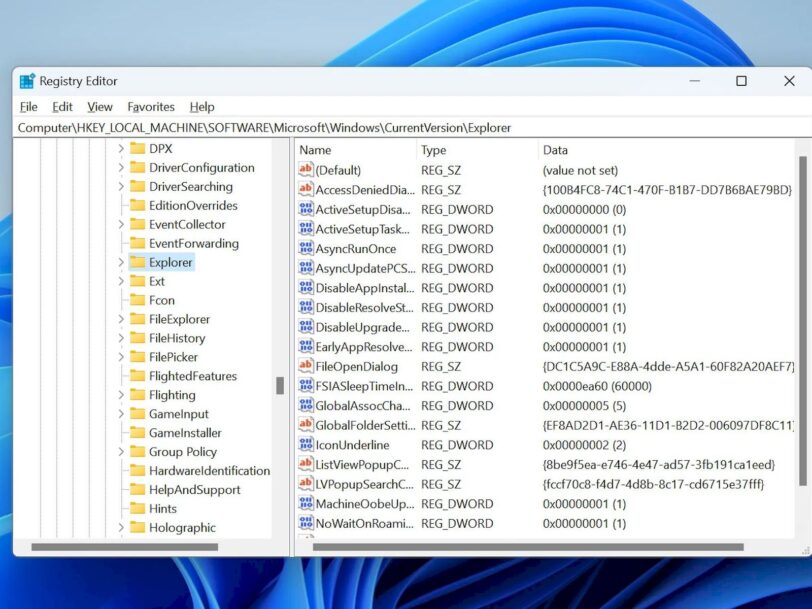What is Windows registry editor?
We tell you all the details about regedit in Windows, the famous registry editor with which you should be very careful.

This time we are going to explain to you what the Windows registry is, what it is for and why you should be careful if you apply modifications to it. We explain everything about this component of the operating system that is also known as Regedit in Windows. Learn what you can do with this tool and what precautions you should take into account.
What is regedit
Simply put, the regedit in Windows is a hierarchical database that stores configuration information for the operating system and applications.
Among the type of data it houses are the following cases: Boot information, User data, Application settings, Controller parameters, Hardware information.
Although we always talk about the Registry Editor, the truth is that we must differentiate between what the registry itself is, that is, the database that Windows creates to store settings and information, and the Editor. The latter is a tool with a graphical interface that allows you to apply changes to the registry.
As we have mentioned, the changes that are applied with the editor in the Windows registry can have a profound impact on the behavior of the system and applications. By touching the appropriate keys, it is possible to improve the performance of the PC or permanently corrupt the boot. Taking this into account, it is vitally important to modify elements of the registry only if you are aware of what you are doing.
What is regedit for in Windows
As we have said, the Registry Editor or regedit in Windows is the tool that allows access to the system registry, that database in which Windows stores basic settings. As a utility, the editor has some interesting features. What exactly is it for?
Change keys
Of course, the main function of the Registry Editor is none other than to allow the user to make modifications to this database of the operating system. Thanks to its explorer, it is possible to locate specific keys and modify the values they contain. This may have little or no impact on the system or on individual applications, depending on the value that was changed.
Remote edits
One of the coolest features of the Windows Registry is remote editing of the registry from other computers on the same network. The functions that it allows to carry out are the same, only that they are applied to another PC. This is an ideal tool for administrators or users who have multiple computers.
Registry cleaning
Another function of the Registry Editor is to clean up the database. We are not referring to including a tool that performs this task automatically, as would be the case with CCleaner. However, if you know what you’re doing, the editor allows you to remove keys and strings that are no longer needed and to reduce the size of the database to make it easier for the operating system to process.
Locate keys or values
Windows regedit integrates a search engine. It comes with several filters among which it is possible to locate keys, values and data. We can say that including this search engine is almost a necessity, especially if we take into account the complexity of the registry as a database.
Improve performance
As long as you have the right knowledge, the Windows registry can help you improve the performance of your PC. This database becomes “dirty” as you use the computer. Also, some of the keys can become corrupted and penalize the speed of the equipment. Thanks to regedit in Windows, it is possible to eliminate the entries that are worsening the performance of the computer.
Make backups
Finally, the Windows registry also allows you to make backup copies of the entire database. This export takes just a few clicks and generates a file with the REG. It is important to note that the export of the registry can be done completely or partially. Then, with the editor itself, it is possible to import the generated file, both on the same computer and on another.
How to access regedit on Windows
To finish, we briefly explain how to access regedit in Windows. All you have to do is follow these steps:
- Press the
Windows + Rkeys on your keyboard to open the Run dialog. - Type the regedit command.
- Click Yes in the dialog confirming administrator privileges.
This last fact is very important: You need an administrator account to be able to access the Windows registry.